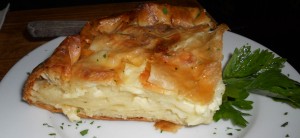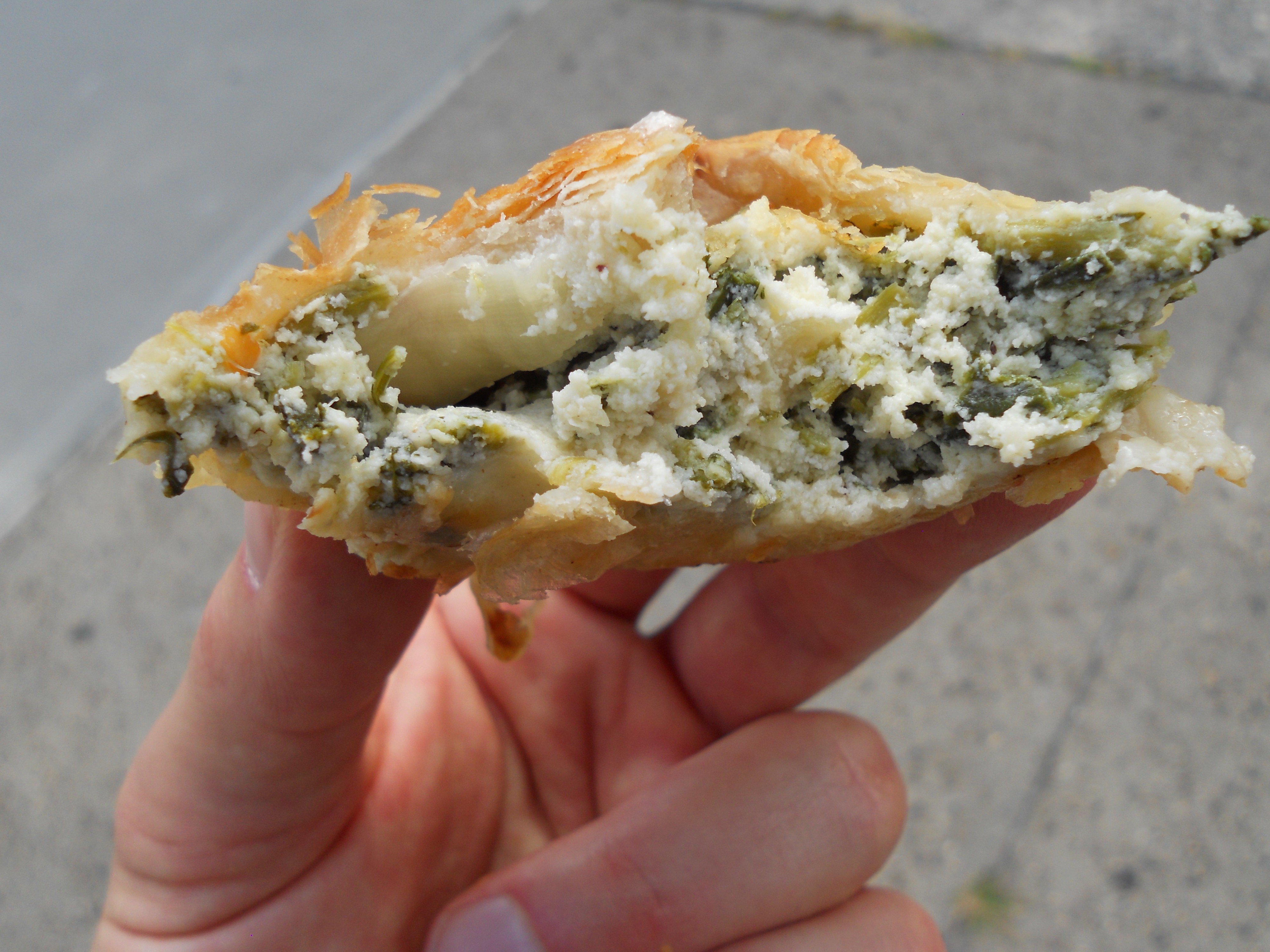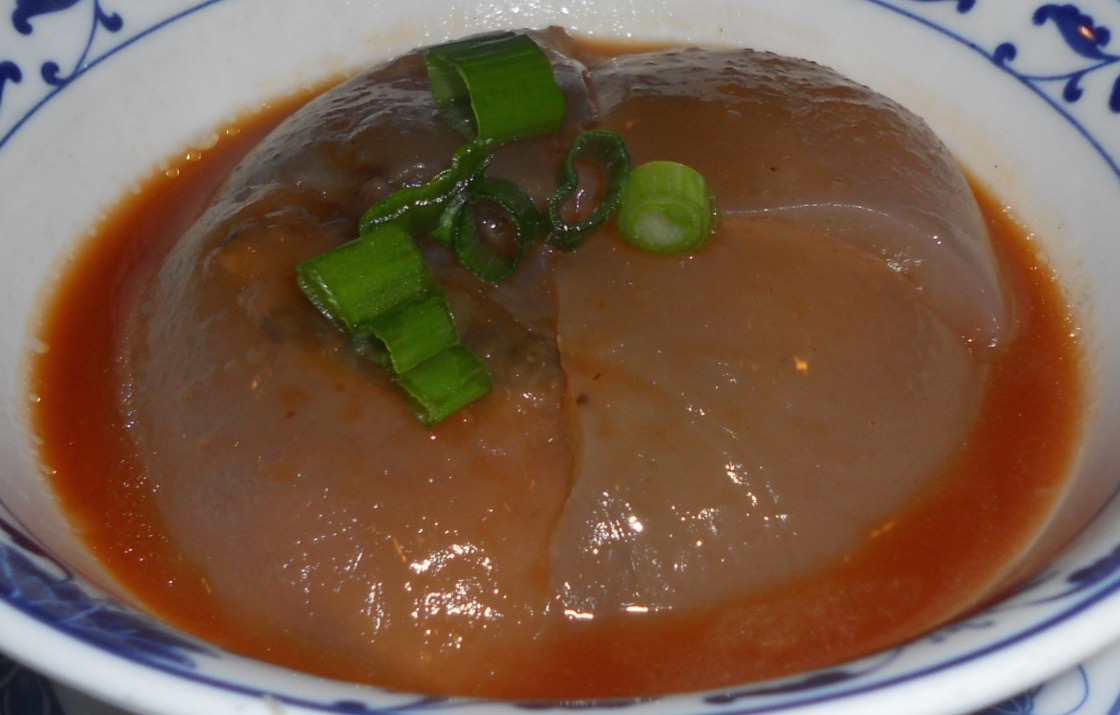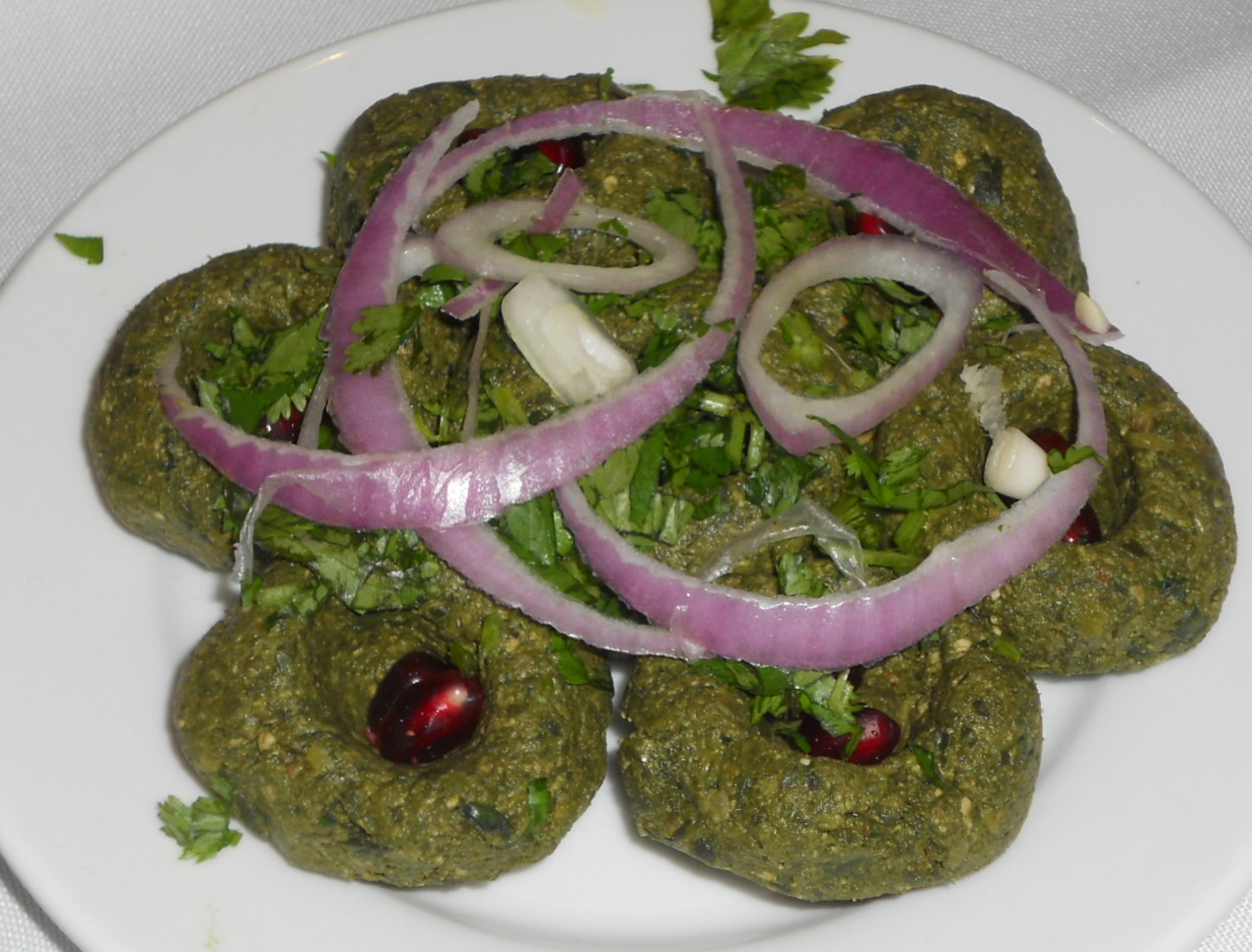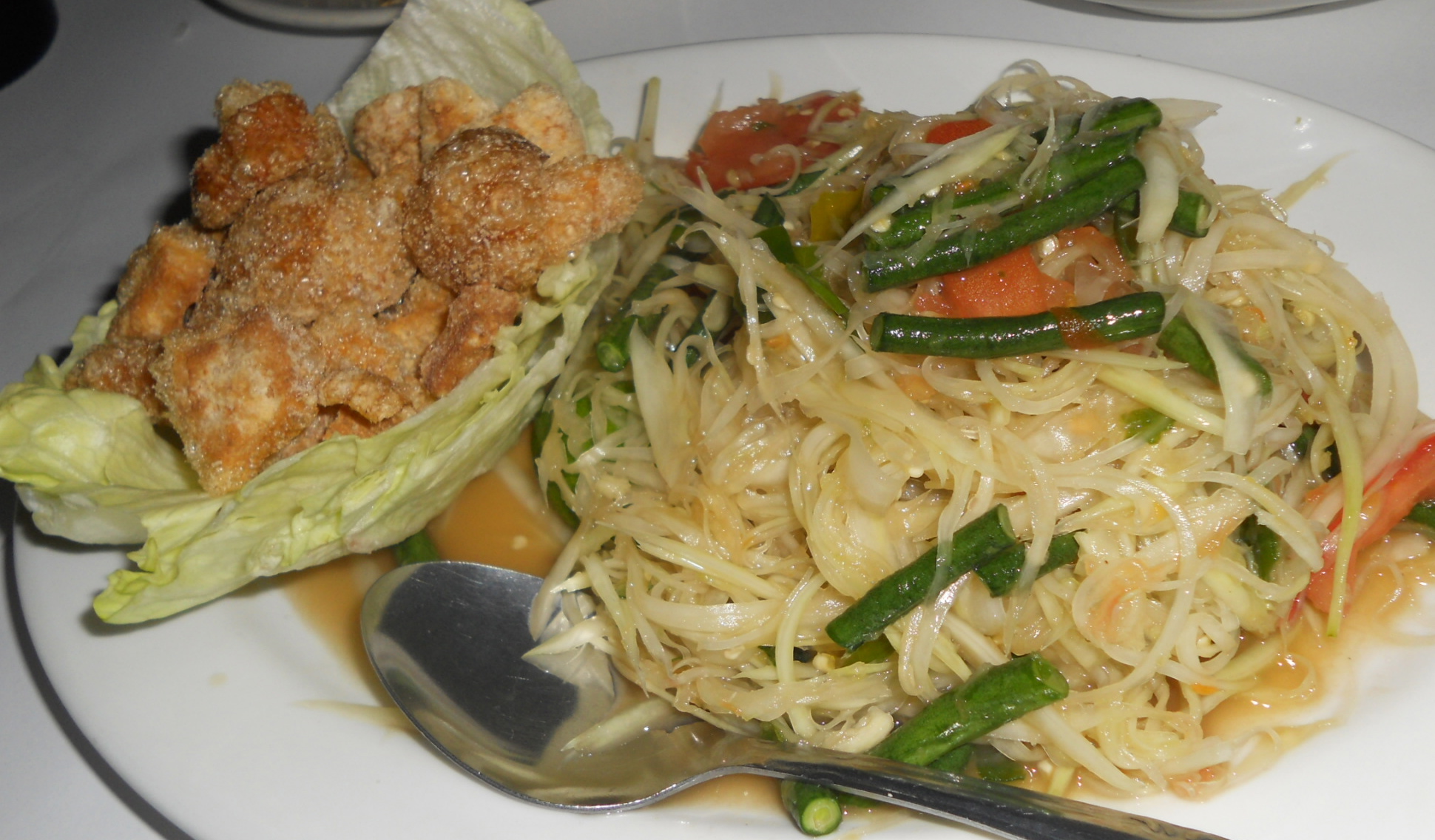Usually, my gluttony is exactly why I enjoy spending so much time in restaurants, but sometimes, the gluttony bites me in the (proverbial, but rapidly spreading) ass. I got home from the Indonesian food bazaar—where friendly ladies continued to stuff food into my hands after I’d already eaten the equivalent of two full meals—at around 5:00 in the afternoon. Two hours later, I met a friend at Kafana in the East Village for Serbian food. I wasn’t ready for another heavy meal. Not even close. This threatened to be an unpleasant evening for my digestive tract and anything in its path.
Oh, well. We ordered an appetizer anyway: gibanica ($5.95), a cheese pie with layers of cow’s milk feta (not as sharp as the goat variety) and soft phyllo dough, similar to a Turkish bourek. It was great. It was large. I struggled to eat my half of the gibanica, since I was still so staggeringly stuffed with Indonesian food. I drank a few glasses of Montenegran white wine ($7), hoping that it would somehow help me to get through the meal without letting my head hit the table.
Luckily, my dining companion—a lively, brilliant Armenian colleague with plenty of great stories to tell—was in no particular hurry either, and we spent a good two hours picking through our entrée, Kafana’s monstrous mixed grill for two ($31.95, and worth every cent). The dish included a perfectly rare porkchop (krmenadla), several pieces of cevapi (legendary Serbian sausage made from minced pork, beef, and veal, arguably the national dish of Serbia), several grilled prunes stuffed with walnuts and cheese and wrapped in bacon, a large piece of seljacka kobasic (“peasant sausage”—larger, coarser, and drier than the cevapi), and some flat, salty, tender pieces of smoked pork loin (dimljena vesalica).
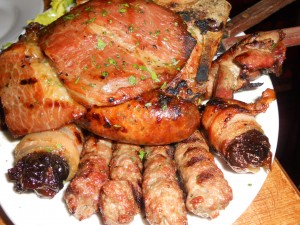
amazing mountain of Serbian meat (somehow, that doesn't quite sound as family-friendly as I'd intended)
All of it was outstanding, though I particularly loved the smoked pork loin, which was salty and tender enough to put a grin on my face. (And if you need somebody to put a grin on your face, ask a non-Serb to read the Serbian food terms in the previous sentence out loud—probably pretty hilarious). The mixed grill even came with a small mound of lettuce, so that we could pretend to eat something healthy.
We chased our meat and lettuce with a delicious plate of sour cherry pie (pita sa visnjama, $5.95) recommended by our server (who was somewhat terse, but also intelligent, efficient, and absolutely gorgeous—my pal had a massive crush on her, especially after four glasses of Montenegran wine). I mildly protested the idea of eating dessert, but once it was in front of me… well, what self-proclaimed glutton could possibly refuse a tasty piece of Serbian sour cherry pie, wrapped in phyllo dough and dusted with powdered sugar?
As our meal was winding down, we learned some great stuff from the friendly young Serbs at the next table. It turns out that cevapi (also known as cevapcici in other parts of the Balkans) is a thoroughly non-standardized dish: each family in Serbia has its own secret recipe, and cevapi served in one store, restaurant, or home might bear very little resemblance to a neighbor’s version. The cevapi-maker’s choice of spices and animal parts (pork, beef, and veal are all fair game) can vary enormously, depending on the chef. (Our Serbian friends had nothing but praise for Kafana’s cevapi, and also recommended Sarajevo Fast Foods in Astoria, which is owned by a family that was famous in Bosnia for their cevapi recipe.)
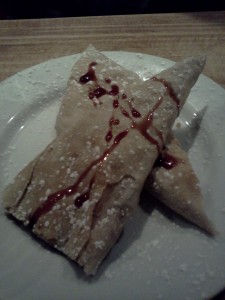
I think my dining companion woulda preferred our Serbian waitress for dessert, but the pie was okay, too
Even more interesting: collard greens are apparently a huge part of the cuisine in parts of Serbia and Montenegro. I usually think of collards as a purely tropical dish, perfected in Africa, Indonesia, and the American South. Nope. Collards are native to the Mediterranean and Balkans, and were apparently introduced to Africa (and eventually to the United States) by European colonists and traders. Serbian collards? Who knew?
Sadly, Kafana doesn’t offer too much in the way of collards, but there’s no shame in settling for cevapi, smoked pork loin, sour cherry pie, and—if you’re a single Armenian man sloshing with Montenegran wine—a little side dish of Serbian eye candy.

Kafana
116 Avenue C., Manhattan
Subway: 1st Ave. (L train) or 2nd Ave. (F train) or Astor Place (6 train)


